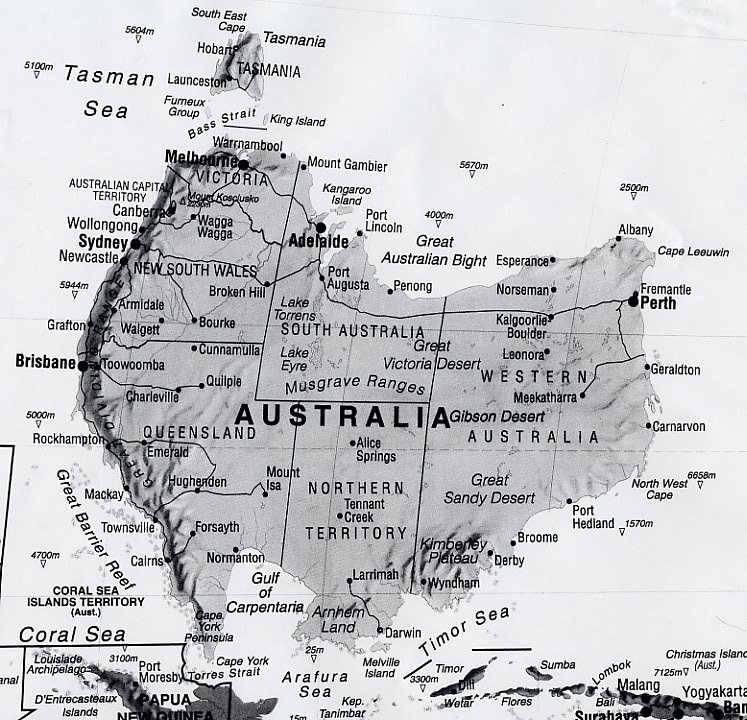
It's another Adam eclipse adventure.
After spending my first three and a half decades
in the United States and southern Canada,
I finally got to Europe in 1991 October.
A student's wedding in
India
brought me to Asia.
My
first
total solar eclipse
1998 February 26, near Aruba
brought me to South America.
I saw my second eclipse, 1999 August 11,
in Szeged, Hungary,
a new part of Europe for me, but not a new continent.
My third eclipse, 2001 June 21, brought me to
Africa,
my fifth continent (in case you lost count).
This was my first trip to the Southern Hemisphere,
so U.S. Navy shipmen might consider me a
Shellback,
no longer a Polywog,
but without the initiation.
That leaves two continents, Australia and Antarctica.
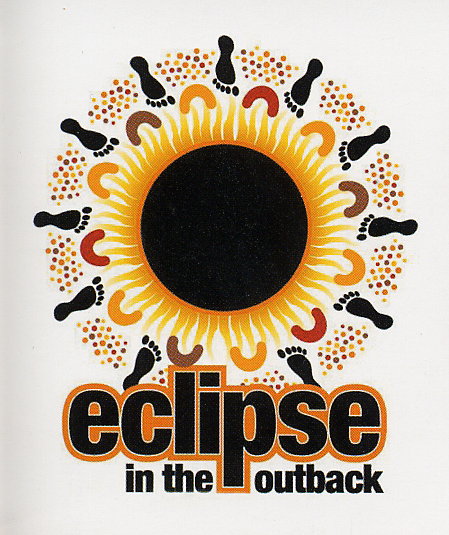
Here is an eclipse, 2002 December 4, whose path runs through Africa in late Spring, through the Indian Ocean, and up the southern coast of Australia in early Summer. (The Australians start their seasons on the first of the month, so the first day of Summer is December 1.) December is the beginning of the rainy season in southern Africa, and the beginning of the malaria season as well. I have had my shots and more shots, and I have taken the anti-malaria drug Larium without incident, but that does not mean I want to tempt fate, at least not gratuitously. Africa also has a 70 percent likelihood of being cloudy on an early December morning.
So that leaves Australia
with a prospect of better weather in the evening.
The total eclipse would be only half a minute
(compared to a minute and a half in Africa).
Further inland offered better weather prospects
at the price of a shorter eclipse closer to sunset.
I poked around on the Internet and found
an English company called
Explorers
with a reasonably short tour
for a reasonable price
(£1299 including air travel to and from London).
Most of the package promoters are trying to sell
me more than I want to buy for more than I want to pay.
I was able to buy their ground-only version (£426),
to find my own air travel to Adelaide and back from Melbourne ($1800),
and to meet them in Adelaide.
It's a long trip
from Atlanta (ATL) to Adelaide (ADL)
and I did not want to make it eight hours longer
by going to London first.
(Both Atlanta and London are 16000 Km
(10000 miles) from Adelaide.)

2002 November 28, Thursday, American Thanksgiving.
My Atlanta-to-Adelaide (ATL-ADL)
journey began Thursday afternoon,
so my American-Thanksgiving dinner was whatever Delta
and QANTAS (Queensland And Northern Territories Air System)
were serving, coach/tourist class airline food.
My trip from Atlanta was a four-and-a-half hour flight to Los Angeles,
a fourteen hour flight to Sydney, and a two hour hop
(delayed an hour) to Adelaide,
where I arrived Saturday afternoon.
The approach to the airport (ADL) goes right over
the center of the town.
From the air I saw
the bright purple
of the jacaranda trees.
Adelaide was originally built as a square mile grid
and that grid is now
packed
with shops, hotels, restaurants, and businesses.
Part of Rundle Street
has been turned into a pedestrians-only
shopping mall.
The original square mile is surrounded on all four sides
with expansive, lush, green
parkland
dominated on the north side
by the River Torrens.
My original plan was to run around the four-mile perimeter
on Sunday morning and then to run pedestrian paths on weekdays.
Even Sunday morning at 6:00 there was
enough traffic
that I decided to stick to the river path
for all my running in Adelaide.
Australia has 18 million people,
about the same population as the Netherlands,
with a land area of 7.7 million km²,
about the same
as the contiguous United States.
While it has a very low average population density,
its cities are busy, bustling, crowded places,
just like cities in America and Europe.
The suburban sprawl is decidedly American in character,
a gradual reduction in housing density
interspersed with strip-malls, lumberyards,
and other space-intensive businesses.
My English and Dutch companions on the trip
commented how the town outskirts looked like the United States
and unlike their home countries.
I wandered around Adelaide, visited the zoo,
heard some folk music at a place called
the Gov,
visited Rundle mall,
saw a tourist-demonstration of some
aboriginal dancing,
and got to know my way around the town.
One of the strange quirks about Adelaide and Melbourne
is that they have audible and visible pedestrian signals.
In addition to the red stop and white walk lights,
the intersections have large pedestrian buttons
with speakers that click for stop
and make funny chirps when it is okay to cross.
I saw few people jaywalking in either city.
Obeying the crosswalk signals may slow movement on foot,
but it must make driving a lot easier and less confrontational.
Adelaide has an astonishing mix of ethnic foods.
One interesting point is that the Chinese food
is prepared by people from China who have not
been to Chinatown in New York or San Francisco.
The food was distinctly and wonderfully Chinese
and just as obviously was not
American-Chinese.
I signed up for an all-day tour
where the morning was visiting the sights of
Adelaide
including some very nice
houses
and a tea shop with delicious biscuits.
The afternoon was spent at
Cleland Park near Mt. Lofty.
Cleland Park is not exactly a zoo,
but it isn't a wild game preserve, either.
It reminds me of
Fossil Rim
near Fort Worth, Texas,
where they have exotic animals who are used to people.
The gift shop sells animal food along with souvenirs
and guests wander around the part amid the animals.
I got to see,
up close and personal,
emus,
kangaroos,
pelicans,
and
other tourists.
(The pelicans can fly, too.
Contrast that with our own big bird,
the flying whale.)
There were
green-billed birds
that made an oinking sound
(at least I'm pretty sure the sound came from these birds),
there were frogs that made a sound
like the pluck of a loose rubber band,
and there were penguins.
There are small dogs called
dingos
and I have no idea when a dog is a dingo
or when kangaroos are really wallabees.
(Maybe it's the same distinction as a pig and a hog.
Farmers seem to know when to call it a pig
and when to call it a hog,
but they look the same to the untrained observer.)
But no visit to Australia would be complete
without experiencing the
king of
cute,
the cuddliest
critter of them all,
the koala bear.
At about 10 Kg,
a koala bear is the weight of two household
cats.
The koala bears at Cleland Park
were managed by a caring
staff
who knew when they had
enough
human company.
Australia starts its seasons on the first of the month,
so December 1-7 is the first week of their summer.
Summer or not,
the nights were cool, 12°C. (55°F.).
The mornings were warm enough for
just cap, singlet, shorts, and shoes,
but the first ten minutes were still chilly.
While their longest day of the year is December 21, the solstice,
the earliest dawn is around December 7
(because of the earth's elliptical orbit),
perfect for a morning runner
who prefers not to run in the dark.
I ran along the
River Torrens
each morning I was in Adelaide.
My morning river runs were rich in the sights and sounds of birds,
and the occasional frog.
There were
black swans
and red-headed birds.
On December 3, Tuesday morning,
we left in luxurious
coaches
(which we call buses in the United States).
These were comfortable enough to make a five hour drive
into the Outback very pleasant.
We got to Woomera base,
which is a small and
isolated military community
out in the Outback.
The place was home to many Americans about fifty years ago
and the Eldo hotel
has many nostalgic touches.
Because there have been many American visitors,
the rooms are equipped with both Australian and American
switches and outlets.
Unlike our switches here in the United States,
Australian switches go down for ON
and up for OFF.
While the astronomy buffs went out to a late-night star party,
I went to sleep and got up early enough to use my binoculars
to see some stars and nebulae on my own.
I also saw a wonderfully bright meteor streak across the sky.
I got out my camera and took pictures of the Outback sunrise,
one,
two,
three,
four,
five,
six.
My morning run was pleasantly cool with very few cars,
twice around the base for a total of about 11 Km
where I saw an emu and two kangaroos.
The afternoon of eclipse day,
2002 December 4,
we were driven out to the eclipse
site on the base.
On the way there,
we saw a gamma ray telescope
and an old rocket
launch site.
We were
lined up
so we all could have a "front row" view of the eclipse.
(An eclipse so close to sunset is low in the sky
and people not lined up this way might
accidentally block each other's views.)
There had been some gloomy weather forecasts,
but the weather was sparkling clear
with a wind strong enough to blow tripods down.
We did not appreciate the virtue of having wind
until we were outside the next day and realized
that the flies in the Outback
would have been far more annoying than the wind.
(We ended up hanging plastic bags full of rocks
to hold our cameras steady.)
You may have thought Australians were just being friendly,
raising and waving their hands at you.
They were being friendly,
but they were mostly swatting at the flies.
We were then treated to a crescent sunset
and I took pictures
one,
two,
three.
Others claimed to see solar flares (promenances),
green flashes on one or both
of the setting "horns" of cresent sun,
and the Loch Ness monster.
I saw no red spots on the sun's surface.
(Also, I did not see any in the good
full-circle eclipse pictures.
My own point-and-shoot picture
zoomed in
has a red inner ring,
probably from optical effects of the lens,
and no visible solar flares.)
As for the Loch Ness monster,
we all saw it from the coach window
the next day on the way back to Adelaide
amid the salt lakes in the desert.
With no wind to blow them away,
the flies made being outside
unpleasant.
Maybe it was the eclipse excitement
and maybe it was just getting a good night's sleep
enough nights in a row,
but my December 5, Thursday morning, run in Woomera
and my December 6, Friday morning, run in Adelaide
felt better
and were about two minutes a mile faster
than the previous four days.
I timed Thursday's run to see
the Outback sunrise
as I came over the crest of a hill.
Unlike the day before,
the eastern sky was cloudy and the sun appeared
only briefly between the ground and the clouds.
I was very glad it was this day and not the day before
that had clouds in the sky.
Our day was spent going back to Adelaide in coaches
and I enjoyed a spectacular Thai meal
at a restaurant called Star of Siam.
(Interesting that they would refer to Thailand by the old name.
I remember a generation that strongly avoided the name "Siam"
and only used the word "Siamese" for
cats.)
Friday was an eleven hour
train ride
from Adelaide to Melbourne
on a train called the
Overland.
It was a relaxing day and the food was a little better
than airline food.
I should point out that the hotel stays
in Adelaide and Melbourne,
as well as the train ride,
were superbly organized by Explorers.
I expected huge lines as a hundred guests or riders showed up,
but everything was taken care of,
as if our arrival was expected.
Both hotels had a hundred envelopes with our names on them
and our room keys inside them.
Melbourne is a big city, several million people,
with a big city feel.
There were a lot more Asians than Adelaide
and I heard a mix of English and Manderin on the streets.
My morning runs along the River Yarra were peaceful enough.
There was a steady stream of
rowers
in the water and a few
preparing
to row.
There was also a steady stream of
enthusiastic coaches bicycling with electric megaphones
giving helpful advice to the people rowing on the boats.
My Melbourne morning runs were peaceful river experiences,
but Melbourne's River Yarra was decidedly more "urban"
than the Adelaide parkland of the River Torrens.
Melbourne's streets had pleasant big city experiences, such as
sculpture and
street performers.
I visited the Melbourne zoo
where I saw a platypus,
kangaroos, emus,
echidnas,
wombats,
a tiger up close
(sponsored by Esso, of course),
Indian elephants,
lions,
peacocks,
many beautiful birds,
and
a lot of other animals.
I finished my Melbourne stay
with a Melbourne Symphony Orchestra concert.
The next morning, I left for Melbourne Airport (MEL)
for my long trip back to Atlanta.
This would not be an Adam essay if I did not
present some opinion on Australia.
Of all the other countries I have visited,
only Canada is as much like the United States as Australia.
These are two countries that have such a wonderful expanse of land area,
far more, even, than we have here.
There was a friendliness and an efficiency
that I associate with an earlier time here in the U.S.
Some of that is the planning expertise of my tour guides,
but,
even with perfect planning,
it takes a certain kind of people-efficiency
to make it happen,
to make things go right.
Having the light switches go the other way,
having the sun in the northern sky,
having people driving on the other side,
and having the Christmas holiday in the summertime
are differences that made the trip interesting.
(And if the water swirls
the
other way
in the drain,
then I did not notice it.)
But I felt it would only take me a month or two
to get used to living in the places I visited
on the big island, nation, and continent of Australia.


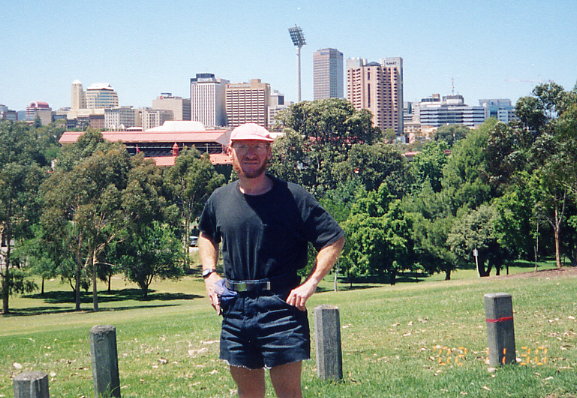
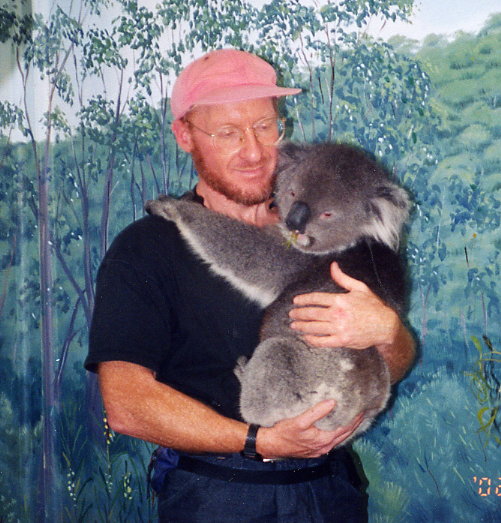
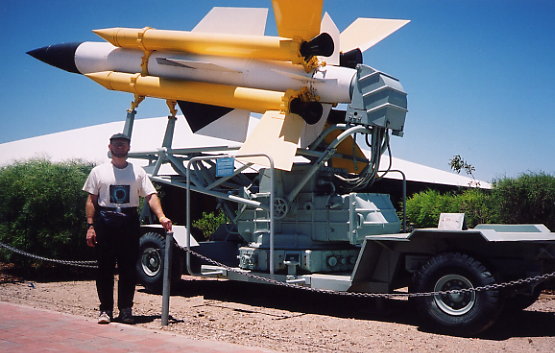
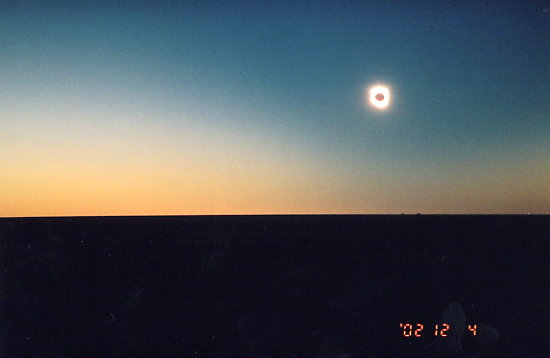
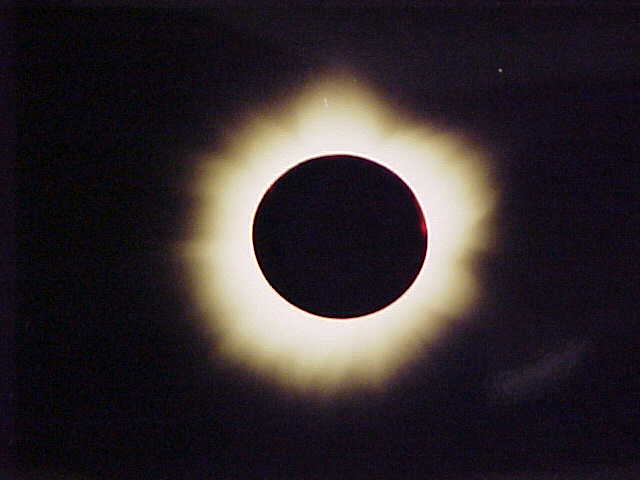

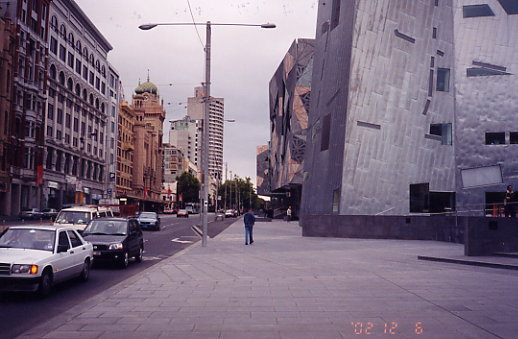
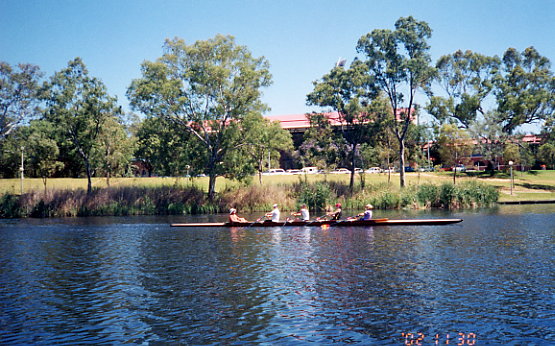
16:01:43 Mountain Standard Time
(MST).
1527 visits to this web page.